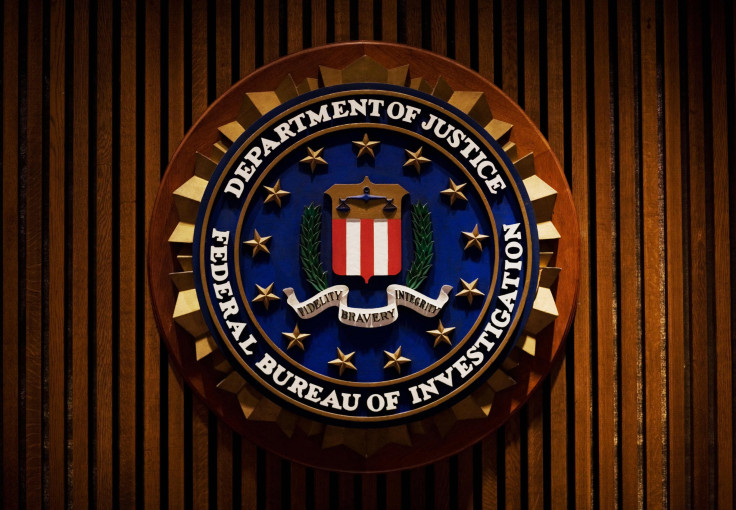FBI Catches Sextortionist That Targeted Minors Through Video Booby Trap

U.S. officials announced this week the FBI caught a sextortionist in Bakersfield, Calif. through a video booby trap on Dropbox.
Buster Hernandez, 26, allegedly made cyber threats to female victims and produced child pornography, authorities said.
Authorities began investigation Hernandez, also known as “Brian Kil” in December 2015. To extort his victims, Hernandez created multiple social media accounts and contacted the females through a private message saying: “Hi (victim name), I have to ask you something, kinda important.” He then asked: “How many guys have you sent dirty pics to cause I have some of you?”
Some victims responded, and when they did he would ask them to more nudes or explicit picture or videos. He threatened that if they didn’t he would send the images he had to the victim’s friends and family. The FBI said Hernandez victimized minors in at least 10 federal districts.
After he received sexually explicit video or images of his victims he continue to extort them until they stopped. When the victim failed to comply, Hernandez would post the images and videos he had in his possession online or would send them to the victim’s family and friends.
Hernandez allegedly communicated with one of his victims, referred to as Victim 1, for about 16 months. Throughout that time the victim send him numerous images and videos of herself, labeled as child pornography.
Hernandez was able to evade authorities by masking the true location of his IP address by using the Tor network. He also opened up multiple Facebook accounts to hide his identity and location.
On his Facebook account, Hernandez posted multiple images of Victim 1 along with a threatening message.
“I am coming for you. I will slaughter your entire class and save you for last,” he told Victim 1.
He also made threats to authorities saying: “I will add a dozen dead police to my tally…Try me pigs, I will finish you off as well.”
He also posted that police wouldn’t find him and that they were “useless.” Hernandez also wrote sexist and racist remarks and threatened to attack the high school the victim went to. In his Facebook rant, he said he had pipe bombs, and then threatened to attack another high school instead.
Addressing the threats, the schools closed down and reopened after authorities assured there were no credible threats.
In December 2015, Hernandez contacted Victim 1 on Facebook and exchanged messages -- but he didn’t know he was actually talking to the FBI. In the conversation, he demanded that the victim’s mother apologize to him.
Besides Victim 1, Hernandez went after two other minors, Victim 2 and Victim 3. When Victim 2 stopped sending images, Hernandez posted the previous images and videos she had sent to him before online.
Hernandez asked Victim 3 to go to a community forum in Plainfield, Indiana to record what authorities were saying about the investigation on him.
During the investigation, authorities contacted Facebook for records related to Brian Kil’s account. Facebook responded with the name, email, registration date and registration IP. However, the email was anonymous and the IP linked to the account was a Tor node. Facebook opened its own investigation in December 2015. The company found numerous Brian Kil associated accounts were opened so he could make threats anonymously. The accounts were created on a rolling basis replacing existing accounts as Facebook shut them down, authorities said.
International Business Times has reached out to Facebook for comment.
In February 2016, he posted on Facebook that it would “take a miracle” for police to catch him. He also said he never actually wanted to kill anyone and that he felt sorry for Victim 1.
“This has happened through no fault of her own,” he wrote. “I couldn’t live with it in my conscious if I continued to lie and destroy this chick further because she did nothing wrong.”
In June, a judge gave the FBI the green light to use a “Network Investigative Technique” in order to obtain Hernandez’ IP address, according to the report. The FBI added a small piece of code to an ordinary video file produced by Victim 2 that did not contain any explicit images. The FBI then uploaded that video to Hernandez’ Dropbox account that he used with Victim 2. When he viewed the video the FBI was able to see his IP address associated to his computer.
After receiving the video he began telling Victim 2’s family members that he was going to kill them, even sending a picture of a knife.
The FBI found the IP belonged a resident in Bakersfield, Calif. and began tapping the resident a few days later. Authorities intercepted images that seemed to be child pornography. Officials also installed a camera outside the home and saw a man taking out the garbage on July 20. On Aug. 1, the FBI issued an arrest warrant for Hernandez.
“Terrorizing young victims through the use of social media and hiding behind the anonymity of the Internet will not be tolerated by this office,” said U.S. Attorney Josh Minkler in a statement. “Those who think they can outwit law enforcement and are above being caught should think again. Mr. Hernandez’s reign of terror is over.”
Hernandez is currently charged with threats to use an explosive device, threats to injure and sexual exploitation of a child. He faces a minimum of 15 years behind bars and a maximum of 30 years if convicted on all counts.
© Copyright IBTimes 2025. All rights reserved.




















